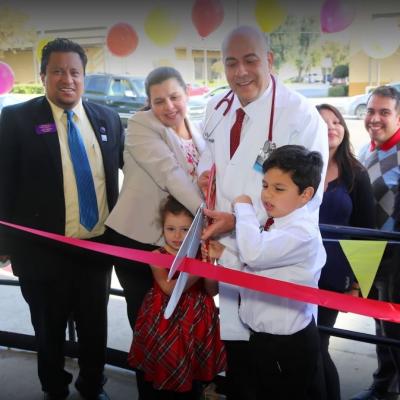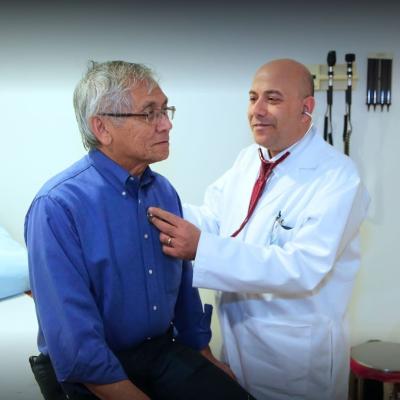Being sedentary during a pandemic can cause elderly people to fall.
Elderly people suffer a greater chance of death from COVID-19 than younger people, but they also confront a lesser known health danger: muscle loss. This loss contributes to falls, the leading cause of accidental mortality among seniors.
Loss of muscular mass and strength (sarcopenia) is prevalent among the elderly, but can begin as early as our 30s. Inactivity and poor diet both contribute to sarcopenia. With gyms and community centers shuttered, many seniors are more sedentary than ever.
At the Jean Mayer USDA Human Nutrition Research Center on Aging at Tufts University, I oversee a team of scientists studying sarcopenia. Every day, I am struck by the patients' reactions. Sarcopenia can cause falls, but it can also cause social isolation, which can have poor health effects on older people. Another example of the pandemic's damage.
But sarcopenia isn't just a coronavirus thing. As we age, we naturally lose muscle mass and strength. Muscle mass is lost and replaced by fat and fibrous tissue, giving the appearance of marbled steak. Inactive elderly lose more than others. Researchers estimate that those aged 60-70 have lost 12% of their muscle mass, while those aged 80+ have lost 30%.
No more drooping skin and flabby arms. Loss of muscular mass impairs regular activities like walking. This can lead to decreased mobility and loss of balance, limiting a person's capacity to fully live.
Sarcopenia is linked to chronic conditions such Type 2 diabetes, heart disease, and pulmonary disease.
Prevent Muscle Loss
No FDA-approved drugs cure sarcopenia, but candidates are in the works. Meanwhile, research shows that regular exercise and healthy eating might help prevent and treat sarcopenia. Resistance or strength training works best.
Over two years, walking and low-intensity strength training reduced the likelihood of significant mobility limitation in older persons compared to a control group receiving health education.
Prior sedentary folks (less than 20 minutes each week) reaped the biggest rewards. They saw the greatest reduction in impairment risk by adding at least 48 minutes of physical activity per week.
Other research suggests food may alter age-related muscle loss and strength. Protein intake may help. In one study, older persons who ate the least protein had twice the levels of inflammation as those who ate the most.
Another study found that eating more protein (92.2 grams per day) reduced the risk of weakness by 30% compared to eating only 64.4 grams per day.
The significance of protein and other nutrients in sarcopenia is still unclear.
Despite the debilitating symptoms of sarcopenia, no commonly accepted clinical test exists. However, imaging techniques exist to quantify muscle mass, strength, and physical function. Muscle strength is linked to walking speed and time to get up from a chair.
Despite all the research, many practitioners are ignorant of this illness. Educating them about sarcopenia and providing them with practical guidelines about appropriate physical activity and nutrition for their patients may be one of the best ways to combat it. They and their families deserve to be informed.
The Conversation published this article.
Roger Fielding is director and senior scientist of the Jean Mayer USDA Human Nutrition Research Center on Aging at Tufts University. He teaches nutrition at Tufts University's Friedman School of Nutrition Science and Policy and medicine at Tufts University.
You may read the Original Article at
https://now.tufts.edu/articles/muscle-loss-older-adults-and-what-do-about-it










 And then Add to Home Screen.
And then Add to Home Screen.